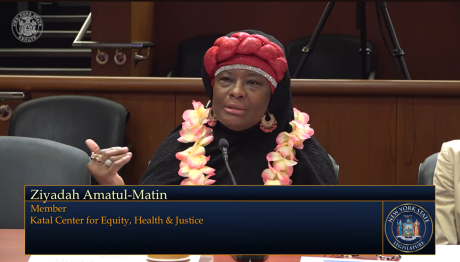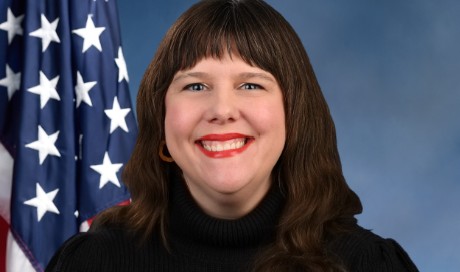
New York’s Prisons and Jails are Deadly. Expanding Oversight Will Save Lives
New York’s prisons and jails are dangerous and deadly for incarcerated people. For decades, New York State’s correctional watchdog has failed to fulfill its mandate to keep incarcerated people safe and investigate when people are harmed in state custody —leading to a culture of impunity that has resulted in rampant abuse and even murder by corrections officers.
A bill (S856/A2315) just passed the State Senate that seeks to increase oversight by expanding and diversifying the State Commission of Correction (SCOC)—the watchdog body that has a constitutional mandate to ensure correctional facilities are “safe, stable, and humane.” Support for this legislation is growing with nearly 100 community, advocacy, and faith-based organizations calling for increased accountability to help curtail the rampant abuse in state facilities. All eyes now turn to the Assembly to see if it will advance before the session ends next month.
Less than six months ago, correction officers brutally killed Robert Brooks at Marcy Correctional Facility. Mr. Brooks’ hands were cuffed behind his back while at least 14 people stood around watching and many participated in kicking, punching, and beating him to death, in such a blasé way that it suggested business as usual at the state facility. The only reason we know about it is because the officers thought they turned off their body cameras, but the cameras were operating in standby mode and accidentally captured Mr. Brooks’ killing. So far, 14 officers have been fired and six have been indicted for the murder of Mr. Brooks.
To make matters worse, correction officers staged an unauthorized strike for over three weeks at the end of February to distract from the criminal indictments in the Brooks case.
During this time, incarcerated people faced physical abuse and lost access to medical care, educational programming, time out of cell, family visitations, and even nutritious food. At least 7 incarcerated individuals died during the strike — many of these deaths were likely avoidable, had correction officers not been illegally striking. Many programs and visitations have still not been fully restored.
And then this past March, correction officers allegedly killed Messiah Nantwi at Mid-State Correctional Facility across the street from where Robert Brooks was killed. So far, 10 officers have been charged in Mr. Nantwi’s death, including two who were charged with murder. Again, we only know the details of his brutal assault because nine incarcerated people went public, risking their safety, to tell the media what they witnessed.
These cases are hardly anomalous. There are hundreds of instances that showcase the pattern of brutal violence incarcerated New Yorkers suffer at the hands of correctional staff. Incarcerated people have rights that must be protected. They have the right to medical treatment, basic necessities like food and clothing, visitations, and time out of cells. Most importantly, they have the right not to be murdered by the people who are supposed to protect them and provide their care.
After Mr. Brooks and Mr. Nantwi were killed, lawmakers and the Department of Corrections and Community Supervision—also known as DOCCS—promised substantial change. The New York State budget has increased the SCOC’s funding to more than $7 million—which was desperately needed—and increased oversight responsibilities, but there needs to be a substantial leadership shift in the commission for these added resources to be used effectively.
The SCOC is statutorily authorized to inspect all 42 correctional facilities in New York, run investigations, provide reports to the legislature and the governor, and shut down facilities out of compliance. It had nine commissioners when it was enacted in the late 1800s, but was slashed to three in the 1990s due to budget cuts. The SCOC’s performance has taken a nosedive since its decimation decades ago.
Our bill would expand and diversify the SCOC so it can do its job. First, it would increase the number of commissioners from three to nine and distribute appointments among the Governor, the Senate, the Assembly, and the independent nonprofit, the Correctional Association of New York.
Second, the appointment requirements would guarantee a diversity of backgrounds across commissioners, including in public health, behavioral healthcare, prisoner’s rights litigation, and personal experiences of incarceration. This broader expertise and perspective will allow the commission to meaningfully advocate for the health and safety of incarcerated people.
We’re encouraged by Governor Hochul’s support for prison reform and Speaker Heastie’s appearance at a critical public hearing on the prison crisis last week. The New York Assembly must pass this straightforward and incredibly timely legislation this year and send it to the governor’s desk for her signature.
Incarceration is not intended to be a death sentence. The more than 32,000 community members serving time in state corrections deserve to know that a state body is overseeing these facilities and will intervene if their rights are violated. Up until now, the SCOC has not lived up to that mandate, but we believe that it can and must.
Ziyadah Amatul-Matin is a Member of the Katal Center for Equity, Health, and Justice.
Emily Gallagher represents the North Brooklyn neighborhoods of Greenpoint and Williamsburg in the New York State Assembly.


